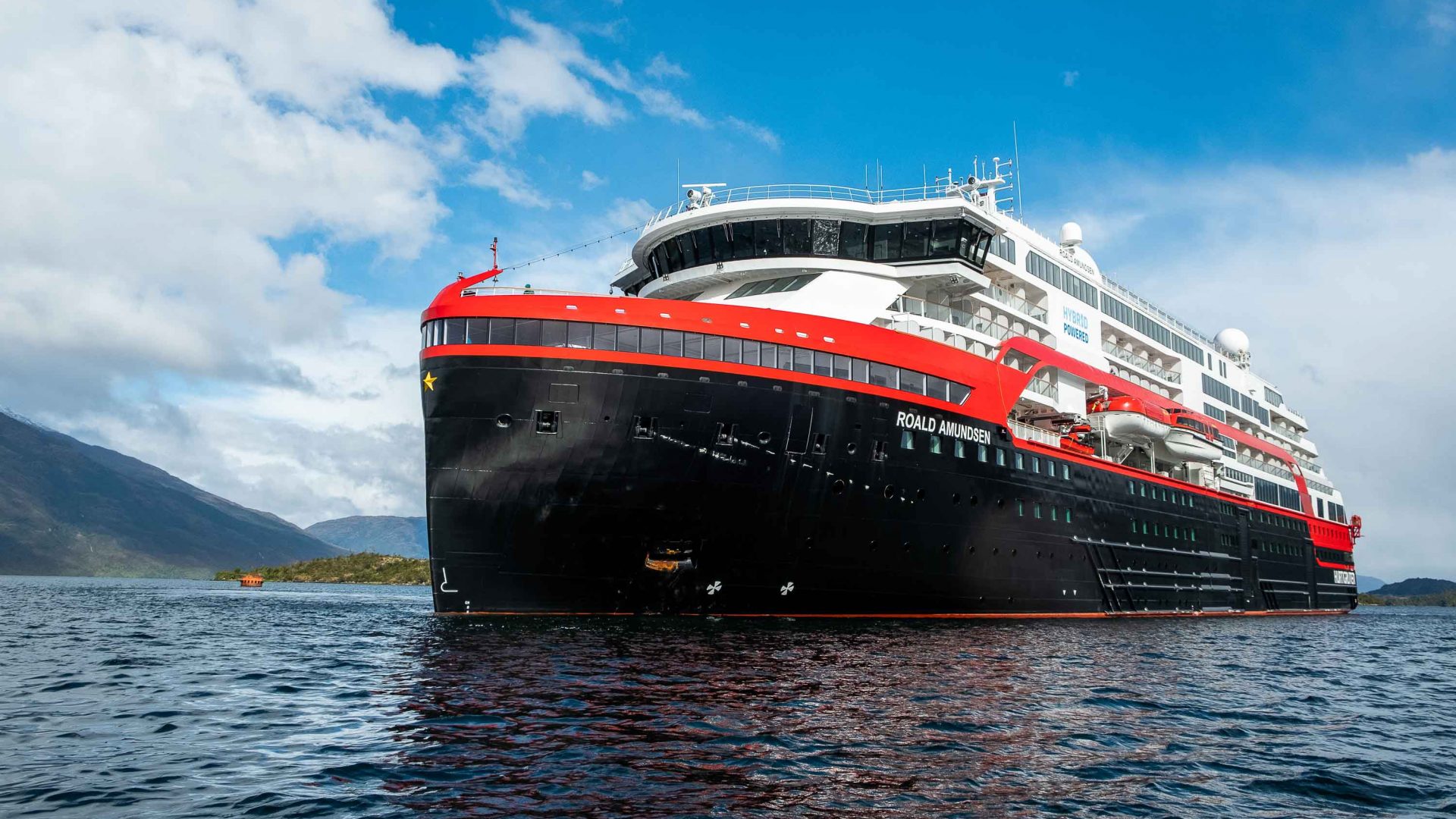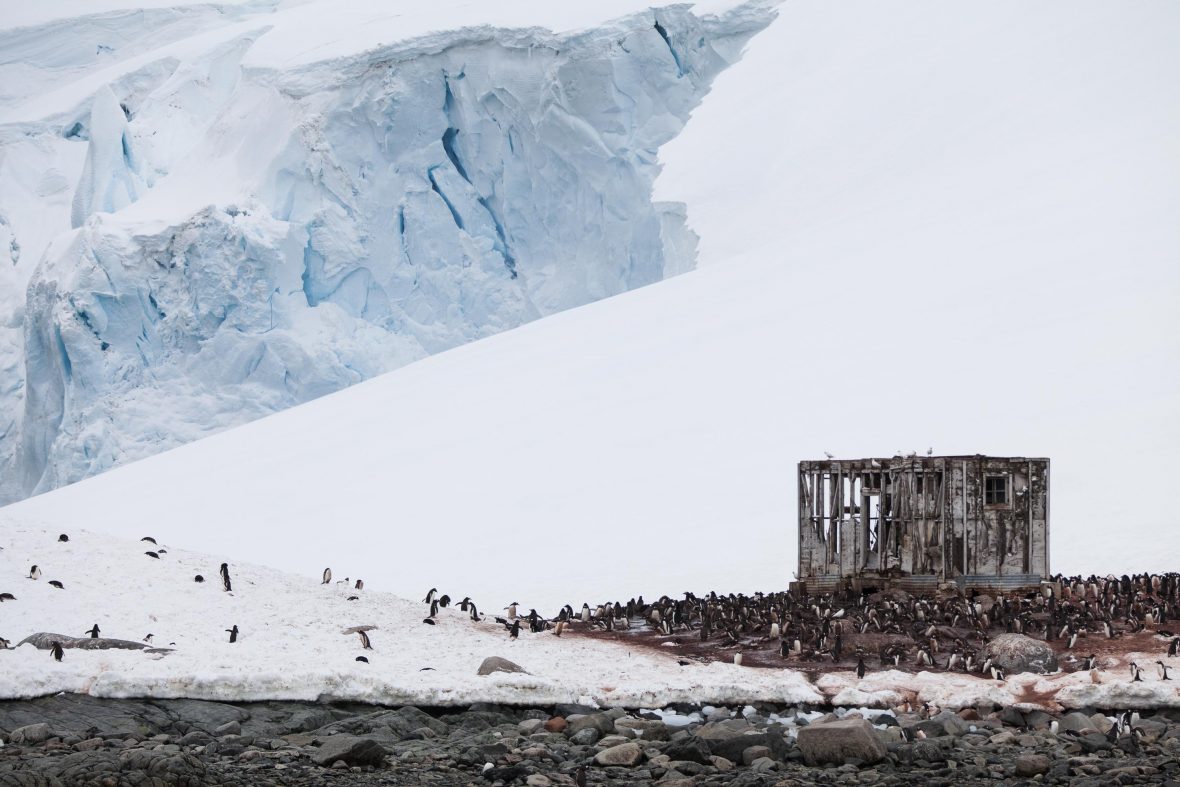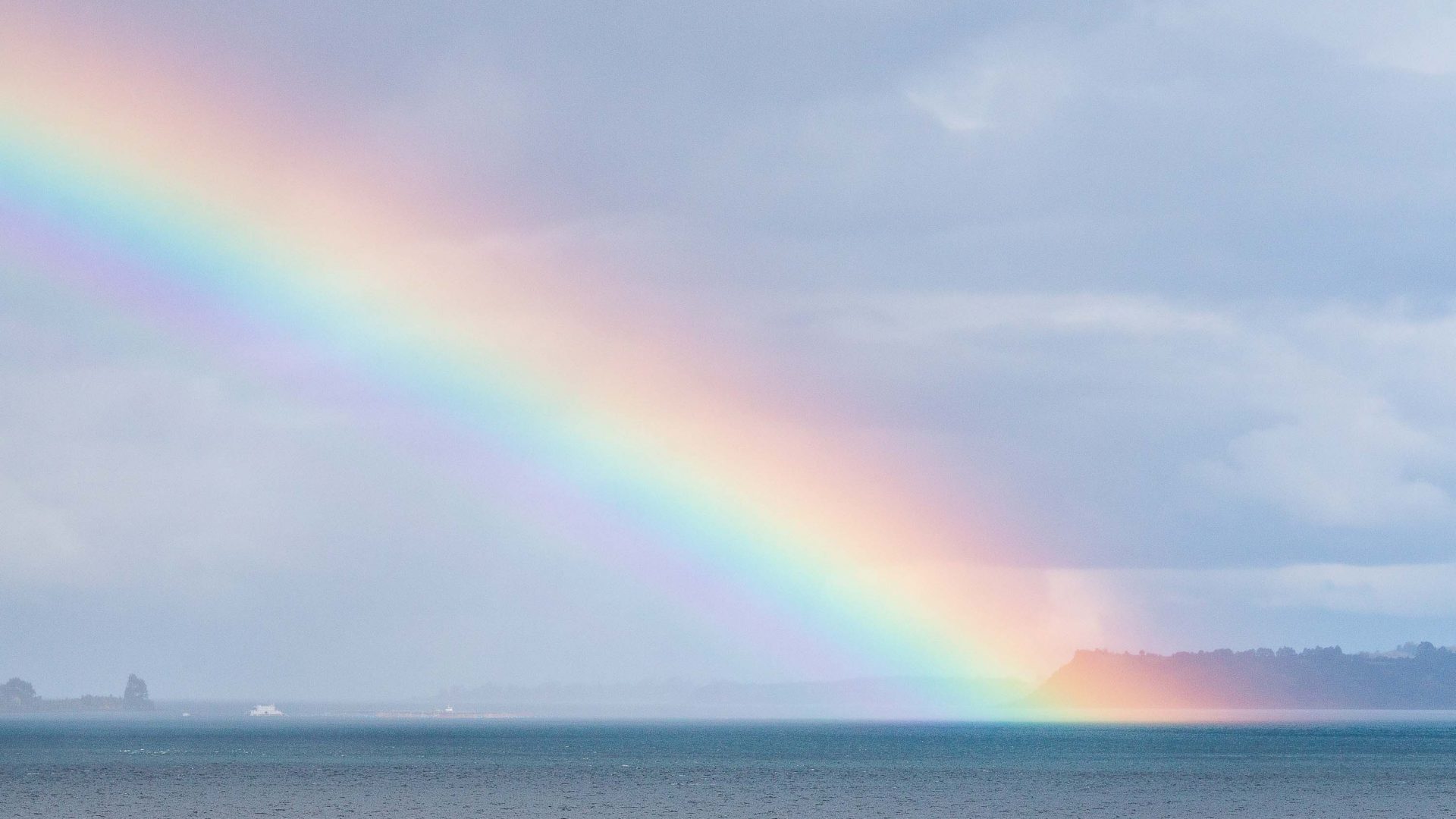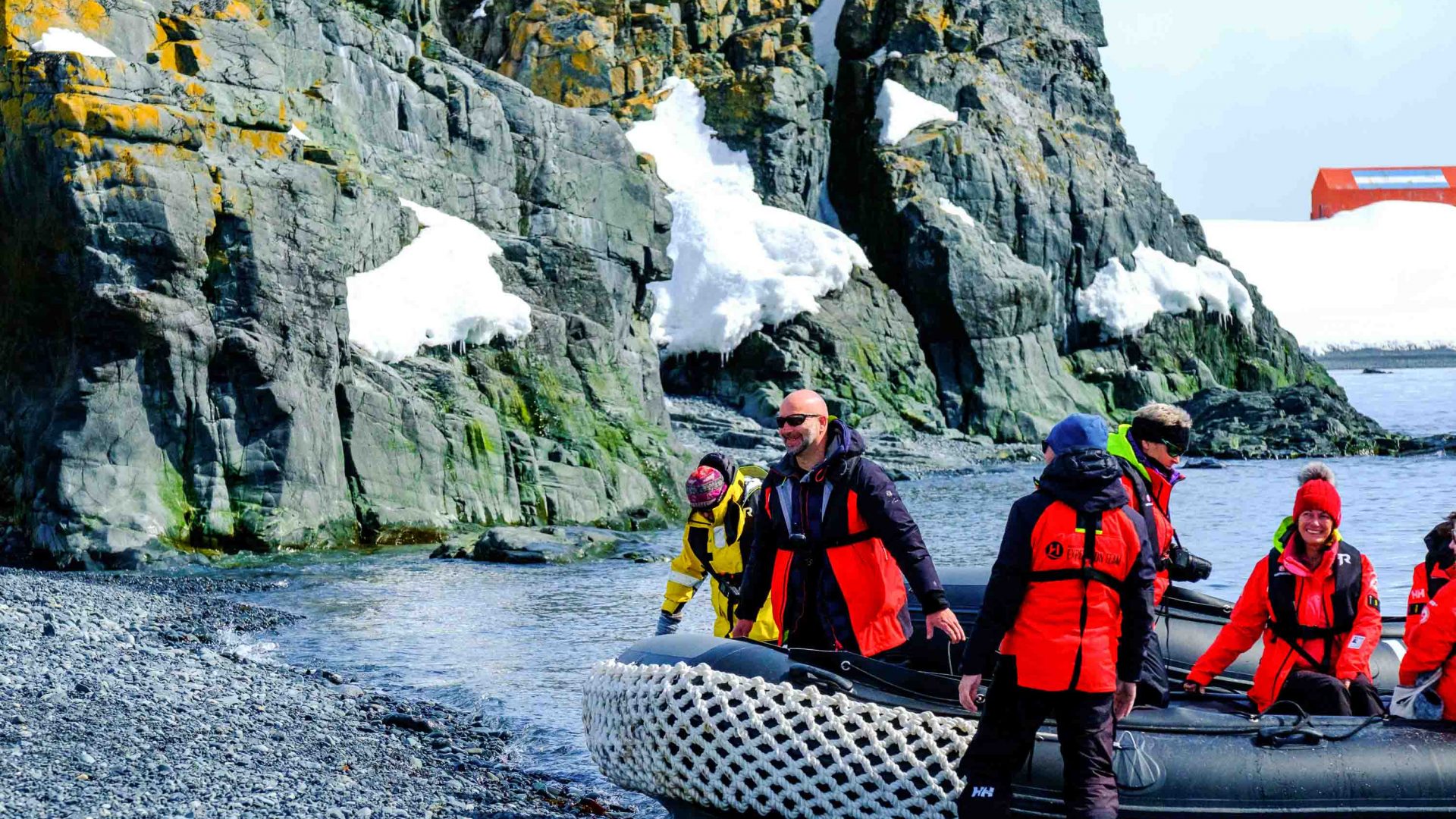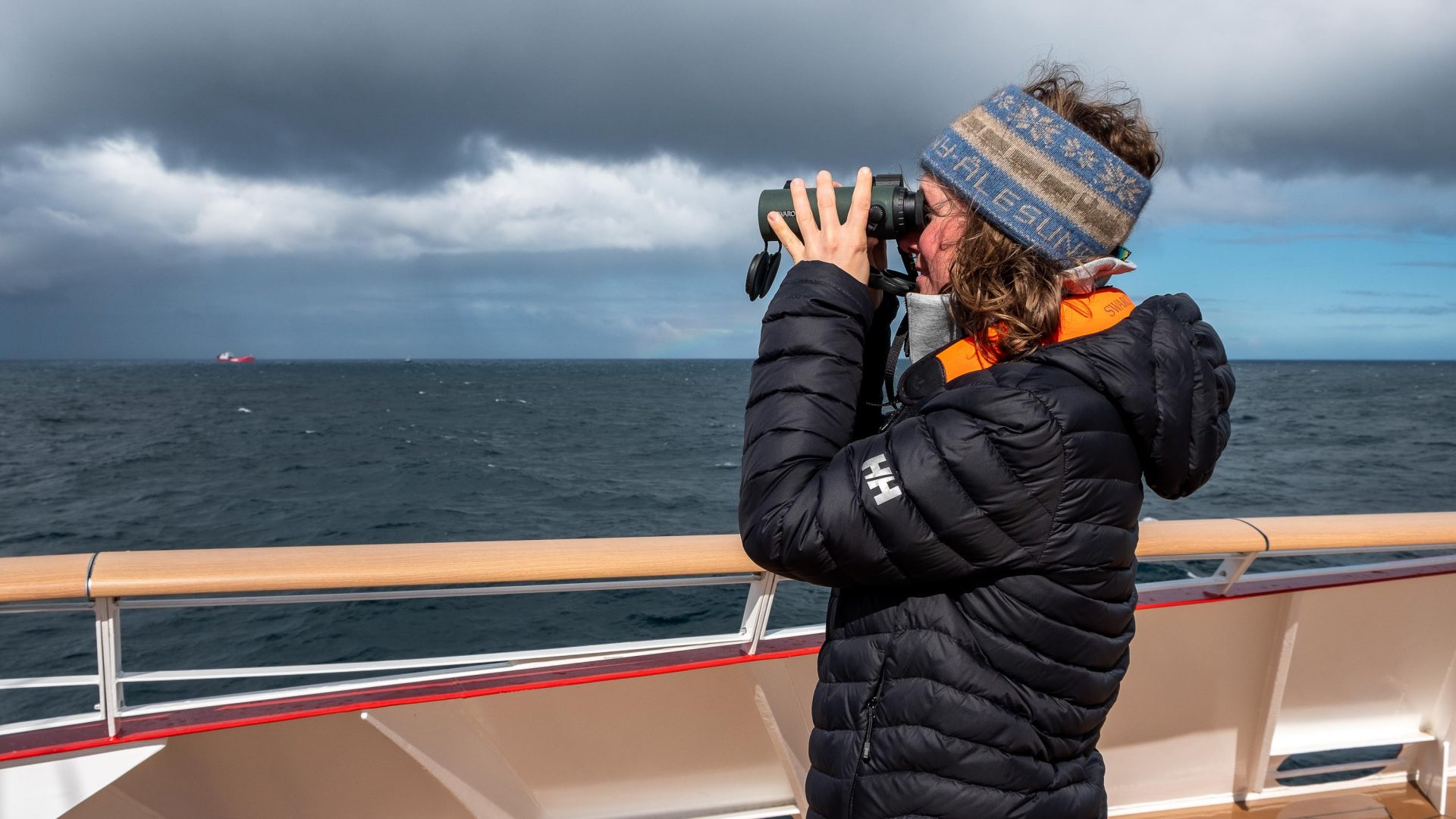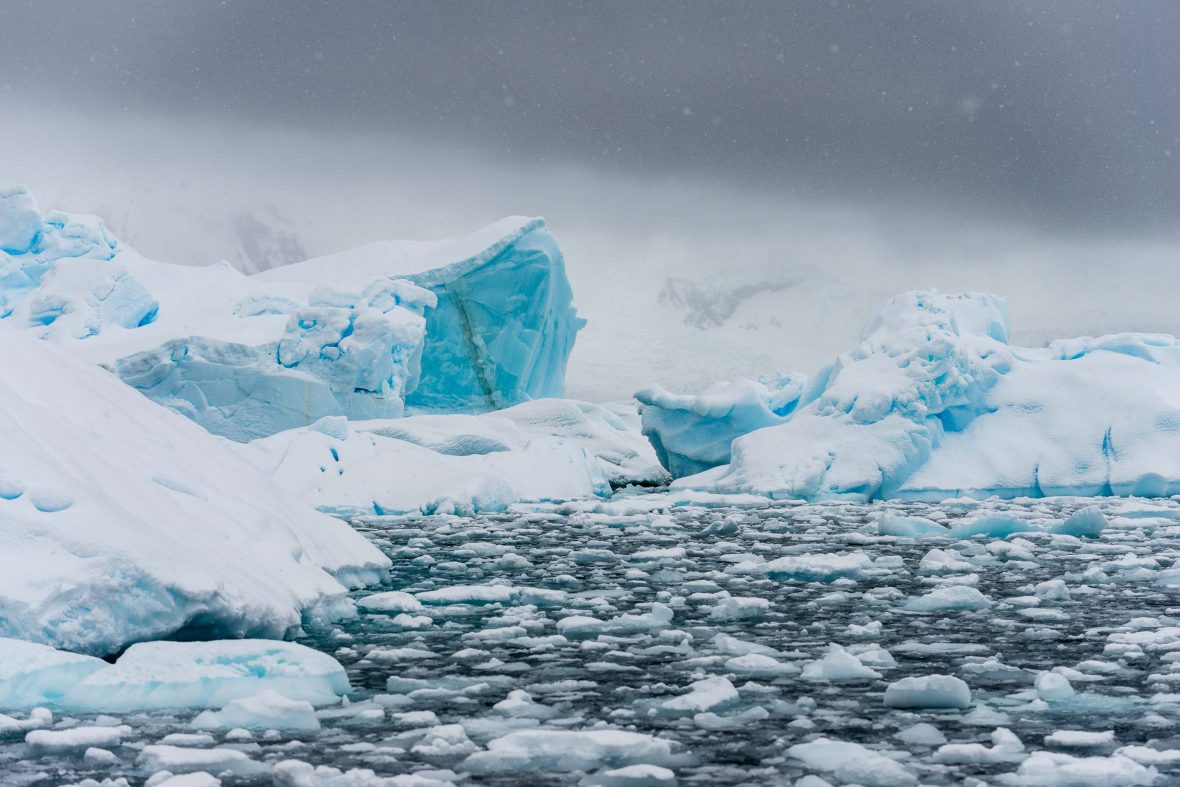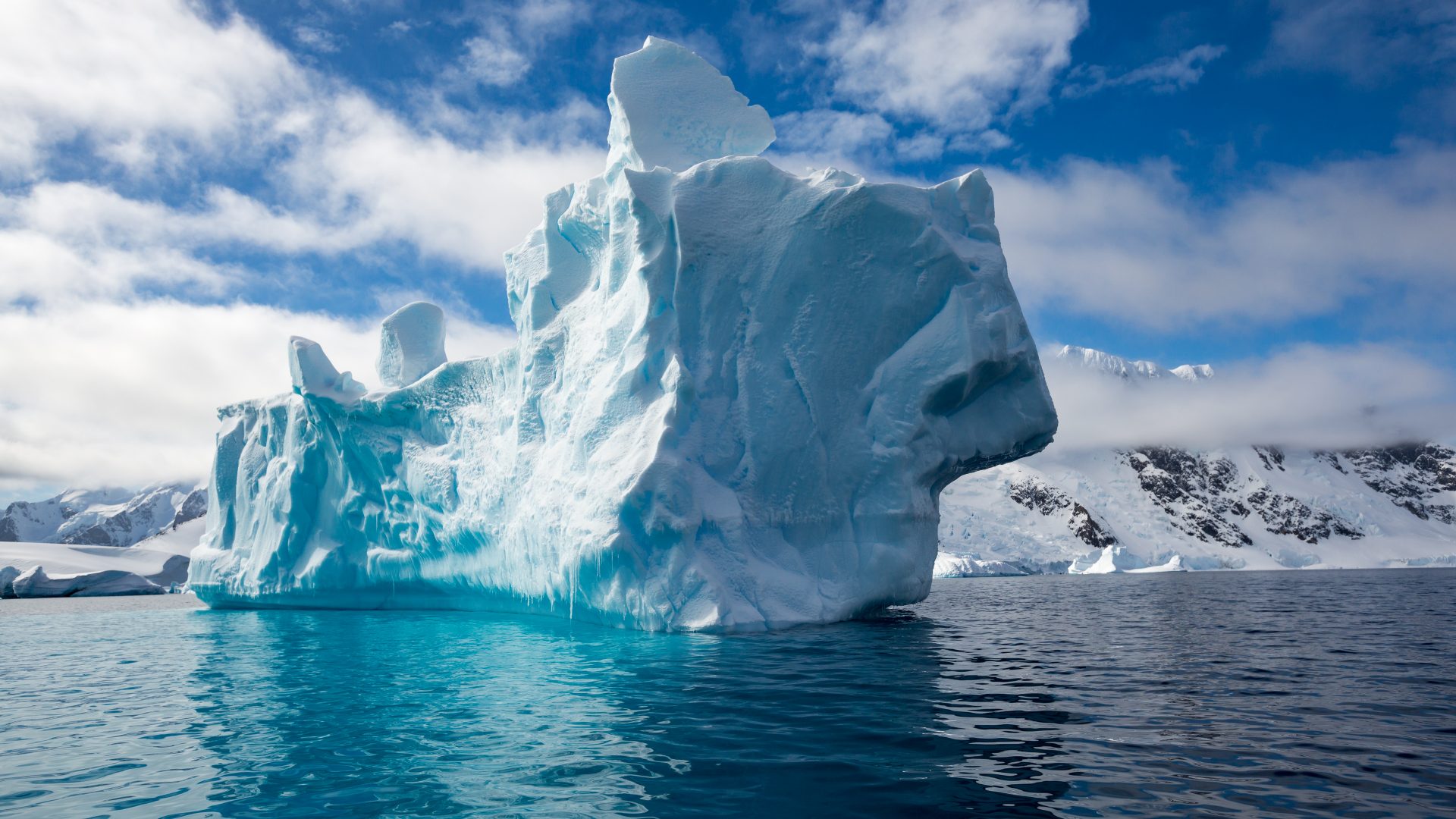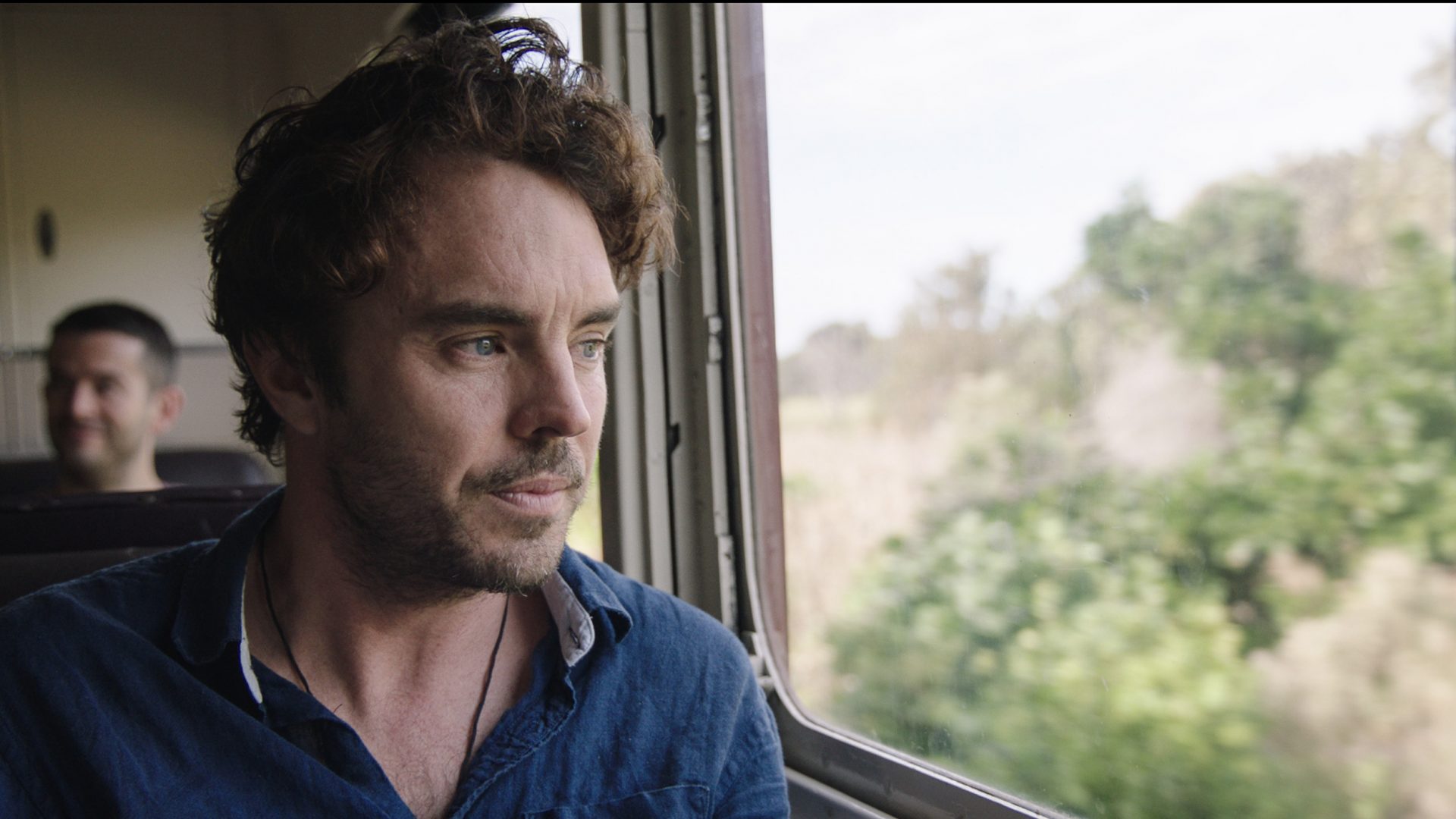In an industry often criticized for its environmental footprint, is the arrival of the world’s first hybrid cruise ship a legitimate step in a more sustainable direction? Kristen Pope clambers aboard for the maiden voyage.
“Iceberg!” my husband exclaims as we rush to grab binoculars and head to the top deck to take in the view. We’re sailing in Antarctic waters aboard the MS Roald Amundsen and due to have our first landing in just a few hours. We watch as the ship approaches an array of icebergs, some with colonies of penguins on them. A faint glimpse of land appears, and we gradually approach the spot where we’ll first touch Antarctica.
Famed polar explorer Roald
Amundsen was just 10 years old when he took to his journal to describe the ship
of his dreams:
“In my imagination, I created an
electric ship that could break through all kinds of ice, that nice and
elegantly, fearful and irresistible, could sail through the Arctic oceans,
straight to the Pole.”
The year was 1882. In 1911, he led the first expedition to reach the South Pole, but he never did sail on the ship of
his dreams.
Now, over 130 years later, the ship he dreamed of as a boy has arrived—and it bears his name. In 2019, the Norwegian company Hurtigruten unveiled the MS Roald Amundsen, the world’s first hybrid cruise ship. The hybrid technology on the 140-meter, 530-guest vessel (which only takes 500 guests in Antarctic waters per international regulations) reduces fuel consumption by 20 per cent and, consequently, produces 20 per cent less CO2 than ships of a similar size.
It’s November 2019 and my husband and I are on board for the ship’s maiden voyage. With Captain Kai Albrigtsen at the helm—the world’s first hybrid cruise ship captain—we sail down the coast of Chile before crossing the Drake Passage to Antarctica. This is the first time a hybrid cruise ship has sailed in Antarctic waters.
RELATED: Your guide to sustainable travel through 2020 (and beyond)
The cruise industry doesn’t have a great track record when it comes to the environment. In 2019, cruise operator Carnival Corporation and its subsidary, Princess Cruises, paid a USD$20 million fine for dumping waste into the ocean and breaking other environmental regulations. This, following a $40 million fine just three years earlier, in 2016.
The arrival of the MS Ronald Amunden is certainly a good news story for the industry, and as well as reducing its own environmental impact, Hurtigruten also hopes it can inspire others to follow suit.
“Why are we doing it?” says Hurtigruten CEO Daniel Skjeldam. “It’s because our ship, our crew, our people, are seeing climate change happen in front of their eyes. We are seeing glaciers melt, we are seeing plastic pollution hit our beaches. It’s visible, and we know that this is the effect of pollution elsewhere on the planet. It’s not local pollution that leads to this change.”
Before setting foot on Antarctica, all visitors are required to attend a mandatory International Association of Antarctica Tour Operators briefing, focusing on protecting the fragile ecosystem. Visitors must vacuum their outerwear and bags to remove dirt and seeds, and dunk tripods and other items in disinfectant as a biosecurity precaution. Everyone is required to wear ship-provided boots ashore and, when returning to the vessel, go through a ‘boot wash’ station—like a car wash, for boots.
Antarctica is like nothing I’ve ever experienced. Surreal. Ethereal. Magic. No thesaurus can do the Seventh Continent justice. The way the light dances; the muted shades of a three-hour long sunset; the playful penguins sliding on their bellies; passing by massive, tabular icebergs—huge floating slabs of ice with mostly flat tops and steep, near-vertical edges. “In my opinion, it’s not the Seventh Continent,” says our expedition leader, Tomasz Zadrozny. “It’s a completely different planet.”
Onboard the MS Roald Amundsen, guests are marveling over this new world while learning about its ecosystem. Lectures about marine mammals, Antarctic history, conservation and other topics form the onboard entertainment, rather than the musical acts, karaoke and casinos available on other cruise ships.
RELATED: Three expeditions that prove zero-waste travel is possible
Guests can even participate in a spot of citizen science, if they wish. During our journey, Scripps Institution of Oceanography researcher, Allison Cusick, takes guests out on smaller tender boats to collect phytoplankton samples that they’ll later analyze under microscopes in the science center.
I venture out with Cusick and a crew of eager citizen scientists, taking turns with tasks such as scooping up water samples, recording measurements, and even deploying a Secchi Disk to chart the water’s turbidity (a measure of how many particles are floating in it). The measurements are all recorded and will be used in research projects—Cusick has already used citizen science phytoplankton data in a paper she and colleagues published in Polar Biology in 2019.
Our trip takes us to the Antarctic South Shetland Islands and to the Antarctic Peninsula itself. One day, we aboard a tender boat, we cruise among the icebergs and other “bergy bits.”
The wind is still, the sun is shining bright—a rarity in Antarctica, we’re told—and the water reflects the scenery above. We pass seals—including a massive leopard seal—and penguins, watching as the glide through the water and pop out before diving back below.
Being able to observe an ecosystem largely undisturbed by humans is an increasingly rare treat on planet earth. And being able to do so ethically, while having as minimal impact on the local environment as possible, is of increasing importance to tourists. The MS Roald Amundsen might be just one ship, but the fact that Antarctic-bound travelers now have a more sustainable option could be the nudge the industry needs to begin changing for the better.
—-
